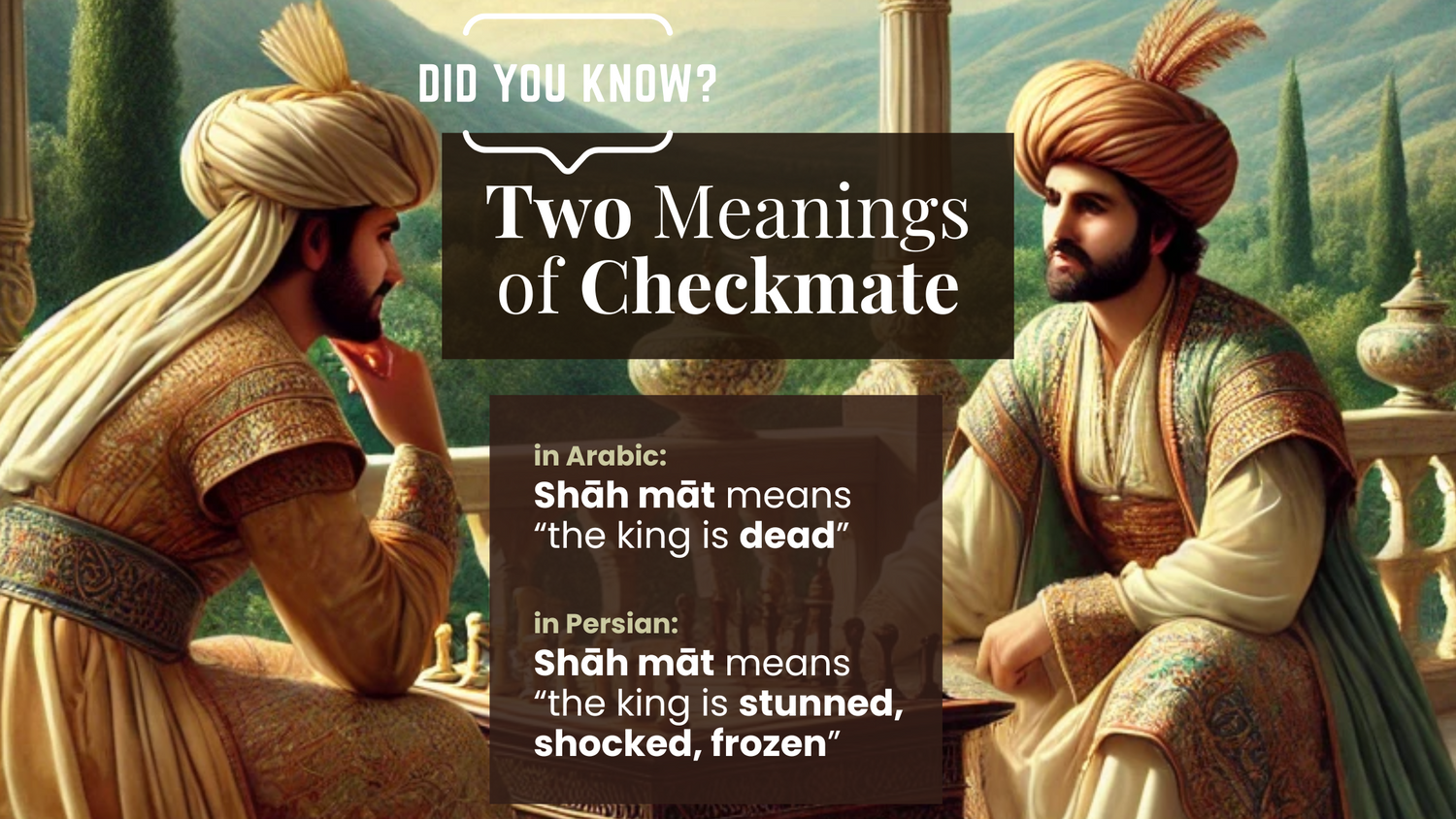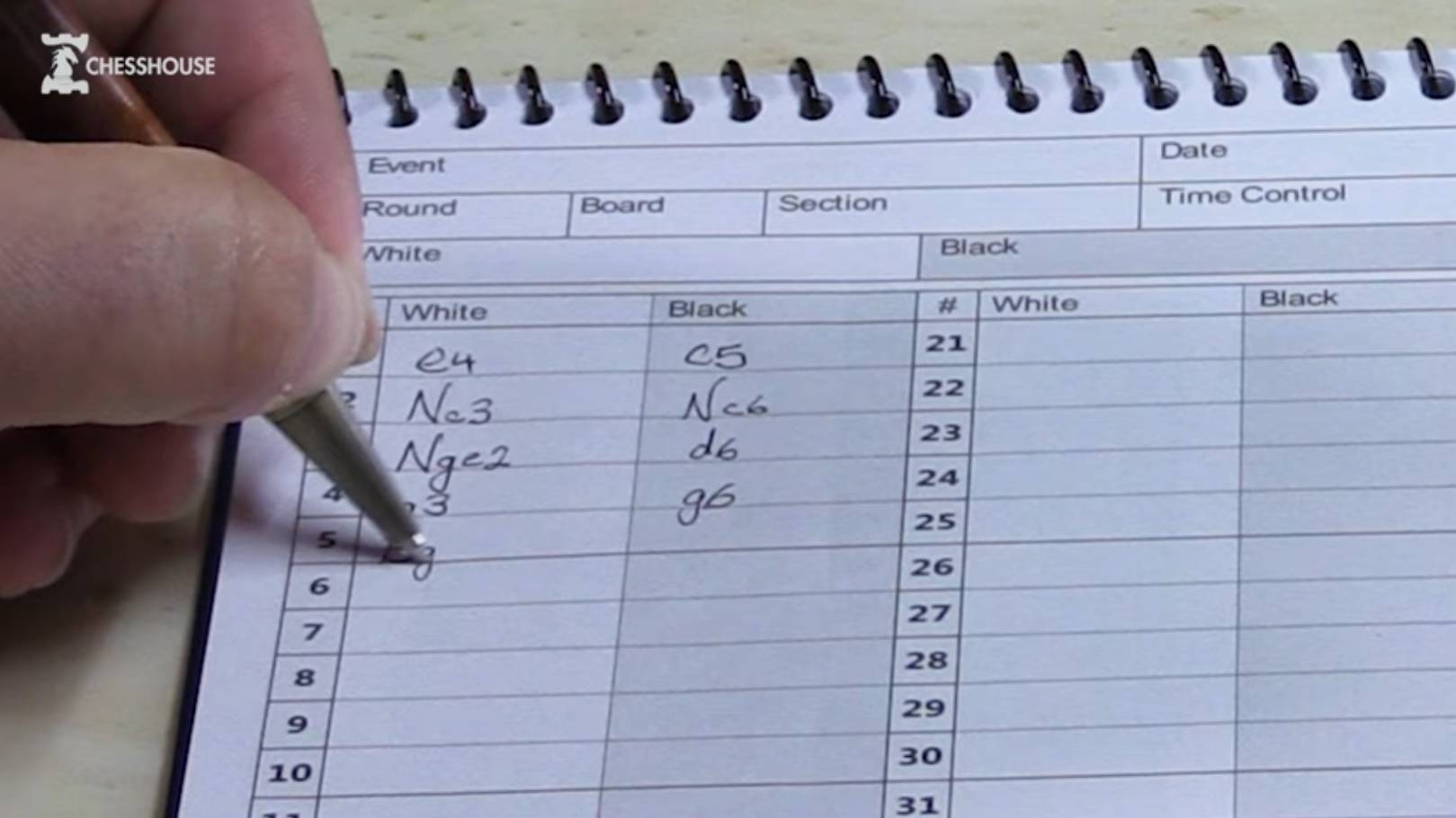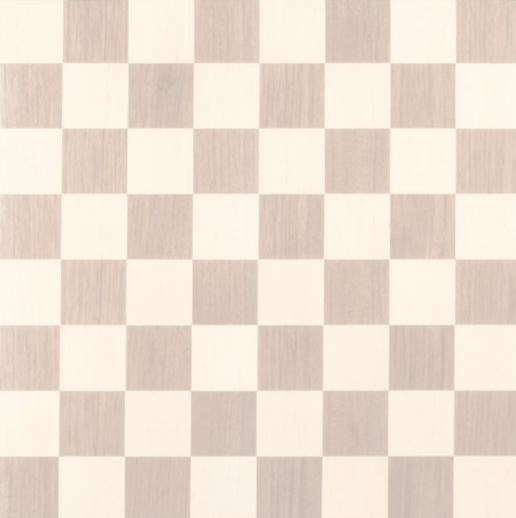The word checkmate is one of the most iconic terms in chess, symbolizing the moment a game ends when the king is in an inescapable threat. But where does the term come from, and how is checkmate represented in chess notation? Here's a brief look into its fascinating origin and its role in modern chess.
The Origins of the Word "Checkmate"
The term checkmate originates from the ancient Persian phrase “Shah Mat,” which means “the king is helpless”. It could also be translated as, "stunned, shocked, or frozen". This phrase reflects the ultimate goal of chess: cornering your opponent’s king so it has no legal moves to escape capture. When chess spread westward from Persia, it passed through the Arabic-speaking world, where the phrase “Shāh Māt" means "the king is dead".
As chess gained popularity in Europe during the Middle Ages, traders and scholars adopted this term, gradually transforming it into the modern English word checkmate. Despite the linguistic evolution, its original meaning has stayed intact, symbolizing the decisive moment when strategy triumphs, and the king falls.
What Does Checkmate Look Like in Chess Notation?
In chess notation (recording written moves), checkmate is typically represented by the # symbol. For example, the move Qh5# means that the queen delivers checkmate on the h5 square. This universal symbol helps players quickly recognize the final move in any game.
A well-known example is the “Scholar’s Mate,” where the moves 1. e4 e5, 2. Qh5 Nc6, 3. Bc4 Nf6, 4. Qxf7# showcase White’s queen delivering checkmate on the f7 square.
By understanding the roots and representation of checkmate, players gain a deeper appreciation of chess as a global game with rich cultural heritage. Whether you're a beginner or a seasoned player, mastering techniques to reach checkmate is the key to becoming a stronger strategist.









Leave a comment
All comments are moderated before being published.
This site is protected by hCaptcha and the hCaptcha Privacy Policy and Terms of Service apply.